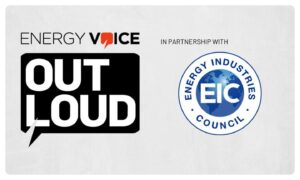
Finance is essential to progress in the energy sector, and while there remains cash for oil and gas, not enough funding is going into new resources.
Wood Mackenzie has estimated the industry will invest around $500 billion in the upstream in 2023. While there are some complexities to lining up financing, with European banks putting pressure on plans, “there is still significant capital available”, Ed Crooks, WoodMac vice chair of Americas said.
Crooks, speaking on the recent episode of the Road to ADIPEC podcast, said demand for oil and gas would continue for some time, even while the transition progresses.
a
The world will not be able to “switch off demand for oil and gas tomorrow, or next year, or even in the next decade”. When the peak does come, oil will likely start declining first, followed by gas.
“If we can’t meet that demand, then that’s going to cause real problems for the energy transition,” Crooks said. “If we restrict supply, while demand continues to grow, that’s going to cause enormous problems. It’s actually going to put a brake on the energy transition and stop it making progress the way we’d want it to.”
Thomas Storch, managing director at Affinity Partners and former deputy director of National Economic Council (NEC) in the US, agreed.
“Incumbent energy players have a lot of know how and ability, so marrying that knowledge and expertise and capital base with new technologies, new innovations and new players, is very important,” Storch said.
Needs and speeds
Different regions and economies will have different financing needs, with a sharp divide between developed and emerging market economies. Crooks and Storch agreed there was a need for more efficient ways to direct capital towards developing countries, in order to meet their ongoing and growing energy demands.
“Energy transitions will play out in different ways, and that means investing in different projects at different stages in different parts of the ecosystem,” Storch noted.
This topic of financing for emerging markets is especially crucial for low-carbon energy projects.
Crooks said it seemed that it was easier sometimes for investors to talk about what they would not invest in, rather than what they would.
Positive choices
Public campaigns are often focused on stopping banks and other backers from supporting oil pipelines, for instance. “It would be much more productive if they started to focus a bit more attention on investments that are not happening, but should happen.”
At the Paris agreements in 2015, the world’s richer countries pledged to invest $100 billion in low-carbon energy access. They have never reached this figure.
“That’s a real sign of this fundamental problem the world has had,” Crooks said.
Removing the roadblocks to investment, and helping facilitate capital flows from a range of sources, is needed for the world to achieve its energy transition plans.
Governments can play a role in helping reduce the risk for private investors. For instance, the offshore wind sector has faced some problems recently with higher costs and supply chain capacity. These can be resolved, but will take time and effort to overcome.
However plans move forwards, it is clear there will be challenges and obstacles to overcome. Policy decisions and target setting are not an end in themselves, but can play a part in driving the transition’s success – or failure.
“Policymakers need to be focused on making good decisions to continue to drive economic growth,” said Storch. That’s essential to driving the energy transition.”
Thomas Storch and Ed Crooks will be speaking at ADIPEC. ADIPEC this year has the theme of “decarbonising faster together”. It will take place on October 2-5 in Abu Dhabi’s ADNEC.
Listen to the second episode of Road to ADIPEC here.
Recommended for you










